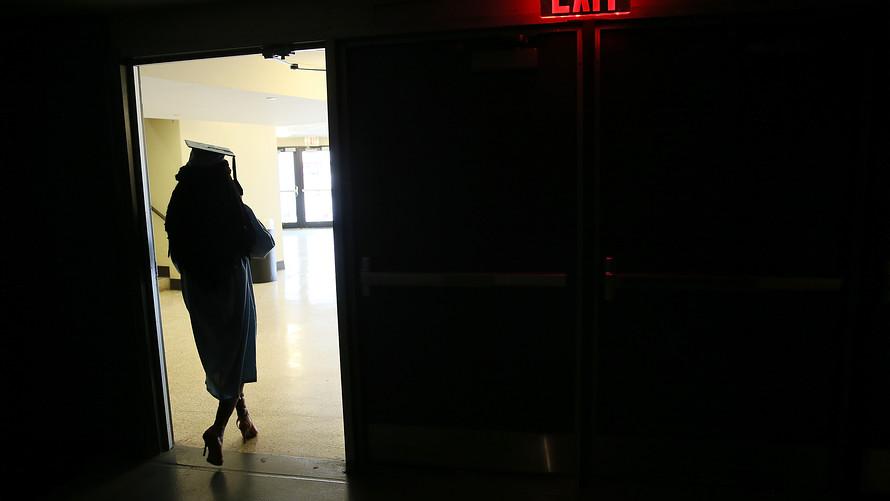
Historically, personal-finance experts and policymakers haven’t worried much about the debt borrowers take on to attend graduate school.
Conventional wisdom goes that a graduate degree will give these borrowers enough of a boost in the labor market to successfully pay off their debt. But a report released this week by the Brookings Institution, a Washington, D.C.-based think tank, calls that assumption into question.
The average amount graduate students borrowed annually nearly doubled over the past two decades, rising from $11,900 per year in 1990 to $23,900 per year in 2014, the report found. When graduate students today enter repayment they have $65,000 in graduate debt alone compared to $19,400 in 1990.
The report painted a bleak picture for graduate-school borrowers
• In 2000, about 3% of borrowers with loans from graduate school defaulted on their debt within five years. For borrowers leaving school in 2009, that share jumped to 5%.
• Even borrowers who don’t suffer the most dire consequence — default — are still struggling, the report suggests. Borrowers who left school in 2009 had repaid 11.5% of their balance after five years, compared to 16% for those who left in 2000.
• For the first time, beginning in the early 2010s, borrowers with high balances — typically a sign of some graduate education — owed more than the amount they initially borrowed in the first years of repayment.
• The share of graduate student borrowers attending for-profit colleges, whose graduates often don’t fare as well on the job market, grew from 1% in 1990 to 17% in 2014.
“Increasingly, some of the same worrisome trends that we worried about for undergraduates seem to be occurring within the graduate student sector,” said Adam Looney, the director of Brookings’ Center on Regulation and the Markets and one of the authors of the report.
Graduate-school borrowers are struggling to repay these loans
Over the past several years, policymakers and experts have been particularly concerned with the plight of borrowers who took on debt to attend college at schools that didn’t provide them with valuable degrees or who dropped out before they could receive them. Often these borrowers have relatively small debts, but because their college experience hasn’t given them a boost in the labor market, they struggle to pay back the loans.
But the Brookings report adds to the growing body of evidence that an increasing share of borrowers who attended graduate school and have high loan balances are facing similar challenges. Obviously this is a problem for the borrowers themselves, but it also affects the government and taxpayers who hold the debt.
Changes to federal policy are largely to blame for this new reality, according to Looney. The government expanded the types of programs eligible for federal student loans, including to those that offer education completely online. Whereas before there was less variation in the types and quality of graduate programs students used federal loans to attend, now that universe has expanded, putting more graduate students at risk of taking on high loan balances for credentials of questionable value.
Policymakers also made it easier for students to get more loan money for graduate school. These days, graduate students can borrow up to the entire cost of their program. The government also expanded repayment options for borrowers, which allow them to make manageable monthly payments, but extend the lifetime of a loan. That means for students who struggle to repay their debts, the loans “will hang over their heads for 20 to 25 years,” Looney said.
One solution: Holding schools accountable
“You can now borrow much larger amounts and not have to repay it back very quickly,” Looney said. “Some institutions have taken advantage of that.” The for-profit sector likely played a major role, but he said “there are a lot of public or private non-profit institutions that expanded their graduate programs in general studies in part to take advantage of the market and the financing available.”
Limiting the amount of money that graduate students can borrow could help prevent more borrowers from leaving schools with balances too high to effectively repay, Looney said. This proposed fix, which House Republicans have proposed as part of their rewrite of the Higher Education Act, the statute that governs higher education and financial aid, is controversial.
Borrower advocates worry it could push vulnerable, prospective graduate students to the private market, which typically offers loans with fewer protections than the federal government.
But Looney also suggests the government do more to hold schools that teach graduate students accountable. That could include tying a school’s loan eligibility provided to a school to the repayment rates of its students.
He’s also hopeful policymakers will pay more attention to the challenges some graduate student borrowers face to prevent future borrowers from experiencing their plight.
“You have relatively young people making big financial decisions,” he said. “Just as they’re embarking on their first career they will be on the hook for a lot of debt and spending a lot of their income on repayment.”























